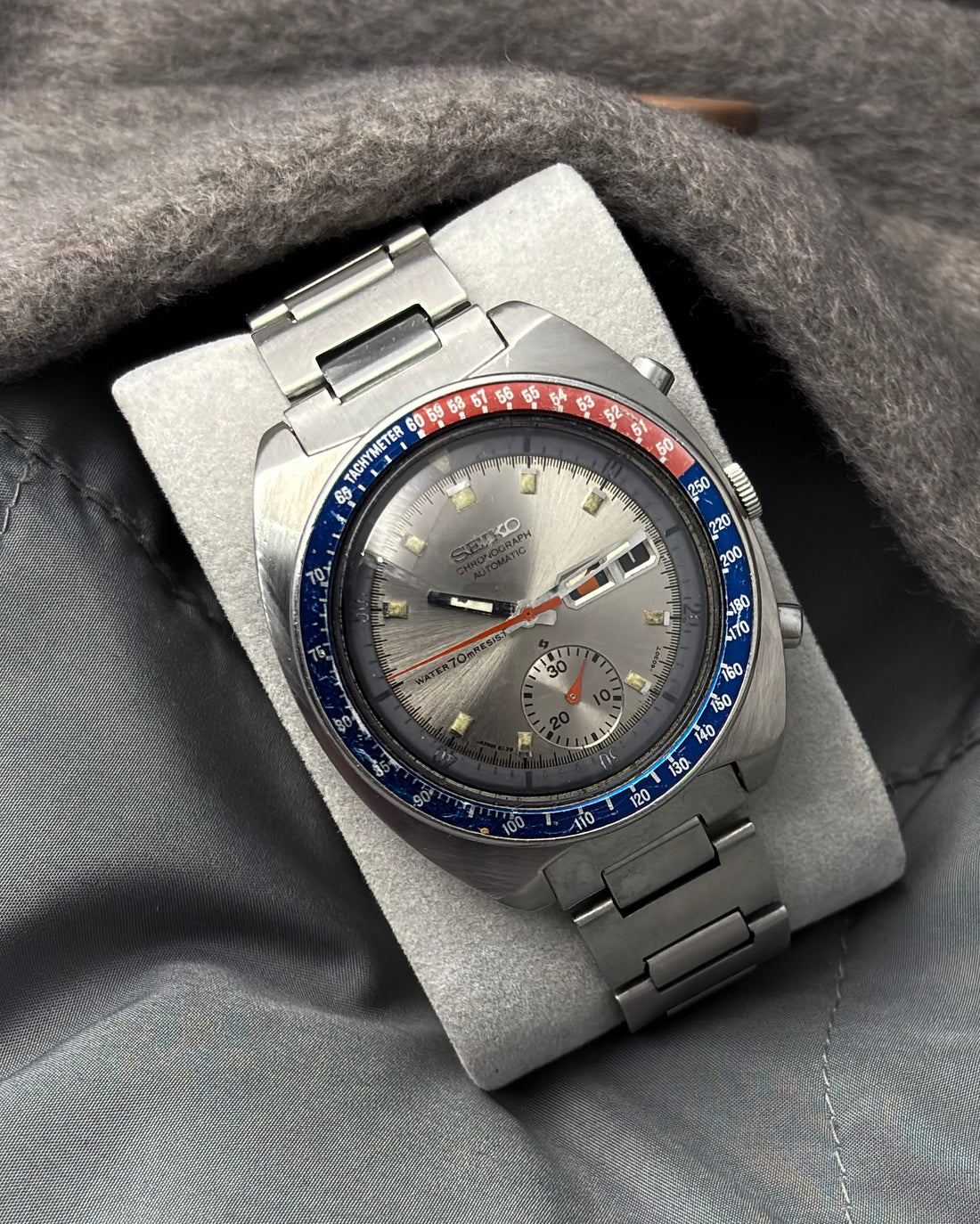
Seiko “Silver Pogue” – The Space-Age Rarity That Was Once a Myth
Seiko 6139-6002 “Silver Pogue”
Among the many legends in vintage watch collecting, few inspire the same awe and debate as the Seiko 6139-6002 “Silver Pogue.” While most collectors know the vibrant yellow dialed version worn by astronaut Colonel William Pogue aboard Skylab 4, the silver dial variant occupies a more mysterious and mythical place in horological lore. Once dismissed as a forgery, the “Silver Pogue” is now revered as one of the rarest chronographs in the iconic Seiko 6139 series.

This particular model from March 1971, complete with its 6030T resist silver dial and original H-link bracelet, is more than just a watch—it’s a bridge between Seiko’s golden age of chronographs and the pioneering spirit of the space age.
A Seiko That Almost Didn’t Exist
When the Seiko 6139 series debuted in the late 1960s, it was at the cutting edge of innovation. Competing with Swiss giants in the race to produce the world’s first automatic chronograph, Seiko quietly introduced the 6139A movement before most of the world had noticed.

Among the variations to follow, the yellow Pogue gained international fame thanks to its appearance on the wrist of an astronaut. But the silver dial variant—less flashy, incredibly rare—faded into obscurity. For years, collectors debated its existence, unsure whether these watches were factory-issued or modified aftermarket creations.
It wasn’t until original 6030T dials and confirmed production runs surfaced that the “Silver Pogue” was officially acknowledged. Today, it's considered one of the rarest variants in Seiko’s 6139 family.
Design That Doesn’t Age
While bold colorways defined the era, the Silver Pogue takes a subtler approach. Its sunburst silver dial, framed by a steel tachymeter bezel, gives the watch an understated, versatile charm. The dial configuration includes the signature day-date complication, often with Roman and English day wheels, and Seiko’s iconic push-button quickset feature.

The 41mm stainless steel case offers a perfect mix of vintage proportions and modern wearability. The watch is topped with its original mineral crystal and paired with the desirable straight H-link bracelet, giving it both aesthetic balance and collector credibility.
Movement That Made History
Inside beats the Seiko 6139B, a rugged, dependable automatic chronograph movement with 17 jewels. At its debut, the 6139 was among the first of its kind—an integrated column-wheel chronograph with vertical clutch and automatic winding, a true mechanical achievement of the era.

It’s not just the technical story that matters here—it’s the fact that this movement flew to space. When Col. Pogue wore a yellow-dial 6139 aboard Skylab 4 in 1973, it became the first automatic chronograph in space, predating even Omega’s automated chronograph entries in NASA missions.
The Silver Pogue, with the same movement and build quality, shares in that legacy.
A Collector's Dream
So what makes the Silver Pogue so special? It’s the perfect storm of rarity, design, and history:
-
Rarity: With extremely limited production and few surviving original examples, the silver dial variant is often considered a “ghost” watch.
-
Historical pedigree: A cousin to the watch worn in space, it brings serious collector credibility.
-
All-original appeal: With its original 6030T resist dial, matching serial case from March 1971, and the rarely intact straight H-link bracelet, this piece is a time capsule of Seiko’s golden chronograph era.
It’s a watch that doesn’t need loud colors to make a statement—it lets its history and scarcity speak volumes.

Final Thoughts
The Seiko 6139-6002 Silver Pogue is the kind of watch that collectors whisper about. It’s rare, it’s storied, and it’s every bit as deserving of the spotlight as its more famous yellow sibling. For those who understand the layers of meaning behind the dial—from Seiko’s technical triumphs to the early days of automatic chronographs in orbit—the Silver Pogue is more than a watch. It’s an artifact of human innovation and one of Seiko’s most elusive masterpieces.
